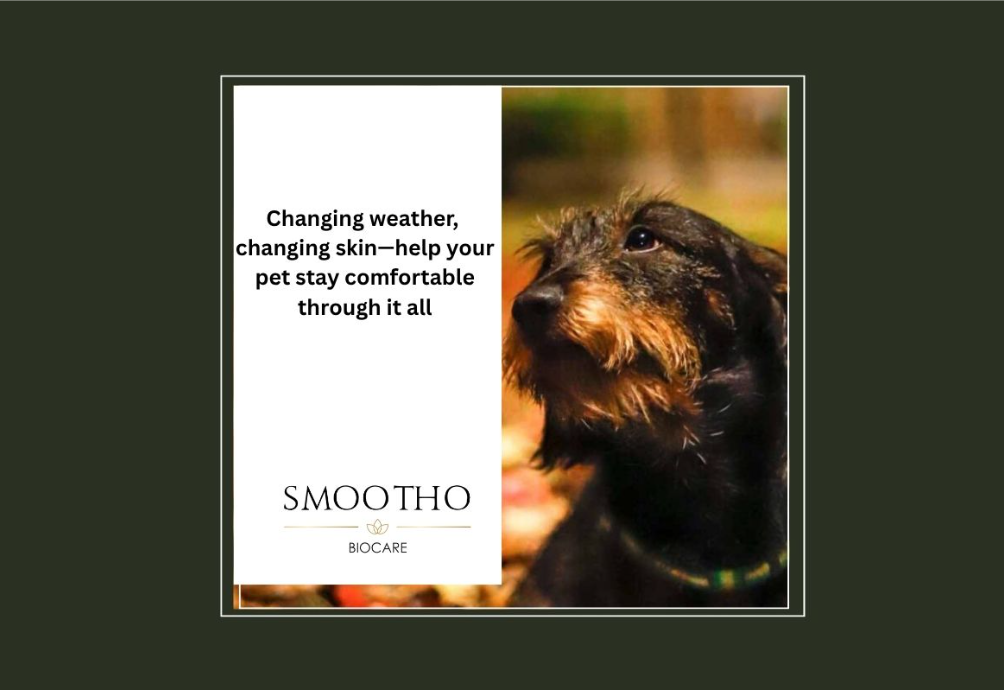
Changing Weather, Changing Skin — Help Your Pet Stay Comfortable Through It All
As pet parents, we often notice how our own skin changes with the seasons—dry and flaky in winter, oily or irritated in summer. But did you know that your pet’s skin goes through similar seasonal shifts? While we have an array of skincare products at our disposal, our furry friends rely on us to help them stay comfortable and healthy year-round.
How Weather Affects Your Pet’s Skin
Your pet’s skin is their first line of defense against the elements. Unlike humans, dogs and cats don’t wear protective clothing every day (except for that occasional cute sweater!). Their skin pH and natural oils work hard to keep their coat shiny and their skin barrier intact, but seasonal changes can throw this delicate balance off.
Winter: Cold air outside and dry, heated air indoors can strip moisture from your pet’s skin, leading to dryness, flaking, and itchiness. Some pets may scratch more or develop dandruff-like flakes.
Summer: Hot temperatures and humidity can increase oil production, attract allergens like pollen, and lead to irritation, hot spots, or fungal infections. Frequent swimming or baths can also disrupt the skin’s natural pH, causing dryness or sensitivity.
Spring & Fall: These transitional seasons can bring sudden temperature changes and allergens that irritate sensitive skin. Shedding can also increase, which may further stress the skin.
Why Skin pH Matters
Your pet’s skin pH is different from yours. While human skin is slightly acidic (around pH 5.5), dogs and cats have more neutral to slightly alkaline skin (typically between pH 6.2–7.4 for dogs). Using the wrong grooming products—like human shampoos—can disrupt their pH balance, damaging the skin’s protective barrier and making it easier for bacteria and fungi to thrive.
Tips to Protect Your Pet’s Skin Year-Round
1. Use Pet-Safe Grooming Products
Always choose shampoos and conditioners formulated specifically for your pet’s species and coat type. Look for gentle, pH-balanced formulas free from harsh chemicals and fragrances.
2. Don’t Over-Bathe
Bathing too frequently can strip natural oils. Unless your vet recommends otherwise, most pets only need a bath every 4–6 weeks.
3. Moisturize When Needed
For pets prone to dry skin in winter, ask your vet about leave-in conditioners or safe moisturizing sprays. Omega-3 supplements can also support healthy skin from the inside out.
4. Brush Regularly
Brushing removes dead hair, distributes natural oils, and helps you spot skin issues early.
5. Keep an Eye on Allergies
If your pet is scratching excessively or has red, inflamed skin, they may be reacting to seasonal allergens. A vet can recommend treatments or allergy-friendly grooming routines.
6. Stay Hydrated
Always make sure your pet has access to fresh water. Hydration supports healthy skin and coat.
When to See a Vet
If you notice excessive itching, redness, hair loss, foul odors, or sores, consult your veterinarian. Sometimes skin issues point to underlying conditions like allergies, infections, or hormonal imbalances that need professional care.
A Little Extra Care Goes a Long Way
Your pet can’t tell you when the weather makes their skin feel uncomfortable—but you can help them stay happy and itch-free all year long. With the right grooming routine and a bit of extra attention during seasonal changes, you’ll help keep their skin pH balanced and their coat healthy, no matter what the forecast says.
